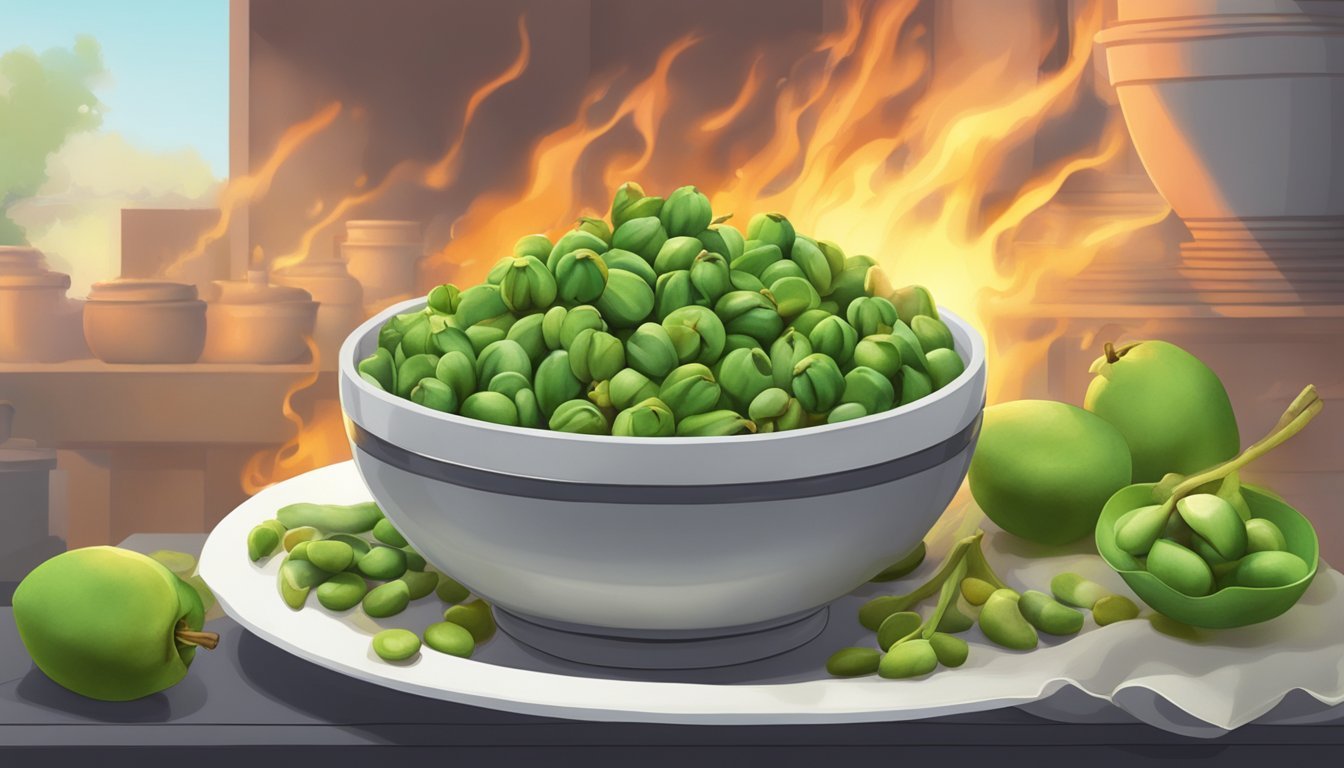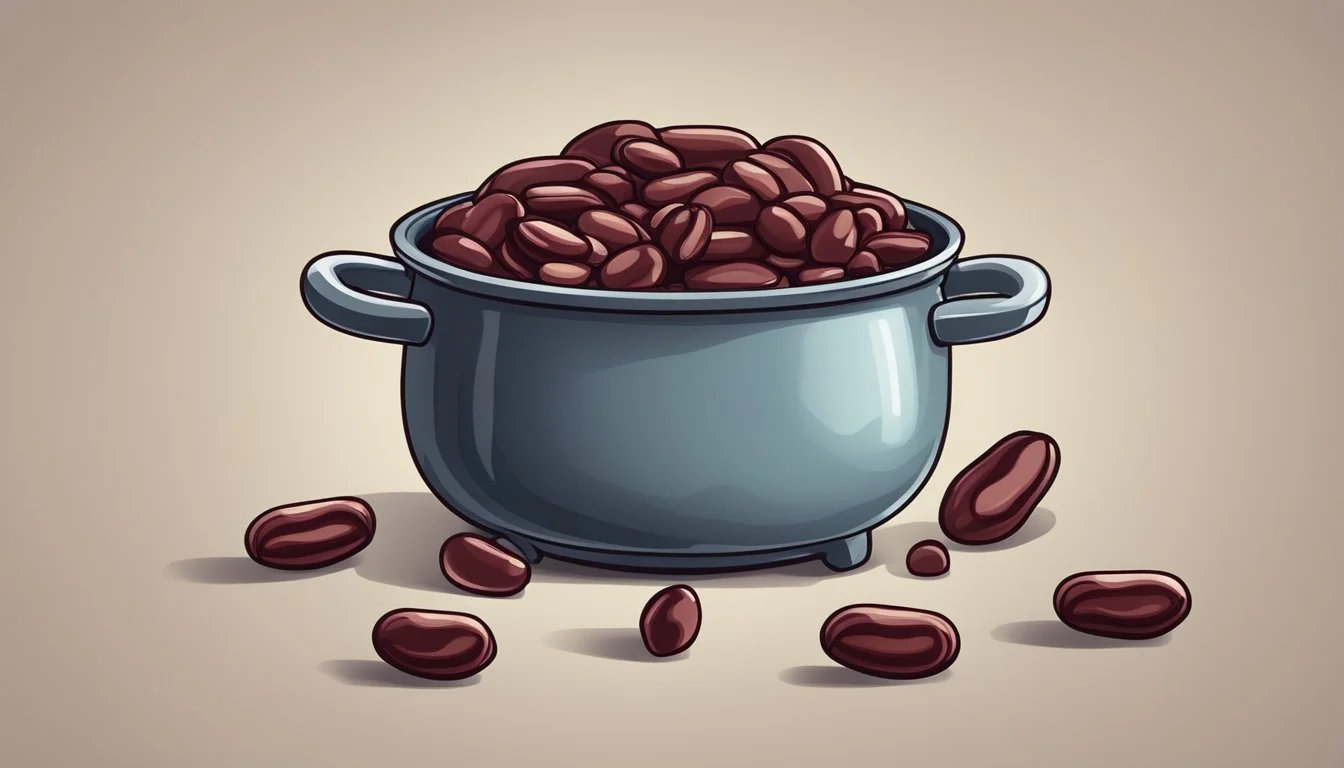10 Most Dangerous Food You Can Eat and Why They Pose Risks
While meals often bring joy and satisfaction, certain foods can pose significant health risks if not properly prepared or consumed. Many commonly enjoyed dishes contain hidden dangers that can lead to serious illness or even death if mishandled. Understanding the potential hazards in these popular foods is crucial for ensuring safety and well-being.
Food safety is an essential consideration for anyone who wants to avoid the unpleasant consequences of foodborne illnesses. Everyday ingredients can harbor toxins and harmful bacteria, making proper handling and cooking techniques vital. Knowing which foods carry these risks can empower individuals to make informed choices in their dietary habits.
1) Fugu (Pufferfish)
Fugu, also known as pufferfish, is one of the most hazardous foods that can be consumed. This fish contains a highly potent toxin known as tetrodotoxin. This toxin is mostly found in the liver, ovaries, and skin of the fish.
Despite the risks, fugu is a delicacy in Japan. Professional chefs undergo rigorous training and certification to prepare it safely. The fish is often served as sashimi, where its flesh is sliced paper-thin.
Other popular fugu dishes include fried fugu, fugu hot pot, and hirezake—a hot sake with a grilled fugu fin. While deaths from fugu poisoning have decreased significantly, they still occur, primarily among those who catch and prepare the fish themselves.
2) Hakarl (Fermented Shark)
Hakarl is a traditional Icelandic dish made from the Greenland shark. The preparation involves a curing and fermentation process that lasts several months. The shark is buried in sand or gravel for six to twelve weeks and then hung to dry for four to five months.
Consuming Greenland shark without this process would be toxic due to high levels of urea and trimethylamine oxide. These compounds can cause severe illness or even death. The fermentation process breaks these toxins down, making the shark safe to eat.
The resulting meat has a strong ammonia smell and taste, which resembles that of cleaning products. Brennivin, a local spirit, is often consumed alongside Hakarl to help with its intense flavor.
Despite its safety post-fermentation, Hakarl is not without its risks. Some people may experience gastrointestinal issues due to the high ammonia content. This makes it important to approach this delicacy with caution, especially for those with sensitive stomachs.
3) Ackee (Unripe and Improperly Prepared)
Ackee, often featured in Jamaica's national dish, can be dangerous if consumed unripe or improperly prepared. The fruit contains hypoglycin, a toxin that can cause severe illness.
Only the yellow arilli of the fruit should be eaten, as the black seeds and unripe parts are always toxic. Symptoms of hypoglycin poisoning include nausea and vomiting.
The pods must turn red and open naturally before consumption. Following these steps is essential for safe enjoyment. Consumers often turn to canned ackee to avoid the risks associated with preparation.
Despite the potential dangers, when properly prepared, ackee offers a unique and delicious experience.
4) Casu Marzu (Maggot Cheese)
Casu Marzu, also known as "maggot cheese," hails from Sardinia, Italy. This unique sheep milk cheese carries an element of intrigue due to its "live" composition. The cheese includes live insect larvae, which advance the fermentation process by their digestive action.
The presence of larvae makes Casu Marzu distinct. As they break down the cheese, they create a soft texture and intense flavor. It's considered illegal in many countries due to health concerns, yet is still prized by some locals.
Casu Marzu's fame stems from being labelled the "world's most dangerous cheese." If the maggots die, it indicates that the cheese is unsafe to consume. This makes the timing of consumption crucial.
Finding Casu Marzu can be challenging, given its banned status in most places. In Sardinia, it has a protected status as a traditional food, exempting it from many regulations.
For the adventurous eater, Casu Marzu offers a truly rare and daring culinary experience. Its peculiar preparation and consumption requirements make it one of the most hazardous substances on any daring gourmet's list.
5) Red Kidney Beans (Undercooked)
Red kidney beans contain a toxin called phytohaemagglutinin. This toxin can cause severe gastrointestinal issues if the beans are not cooked properly. Symptoms include nausea, vomiting, and diarrhea, which can occur within a few hours of consumption.
The toxin levels in raw kidney beans are significantly high, between 20,000 to 70,000 hau (hemagglutinating units). Proper cooking reduces these levels to 200 to 400 hau. Boiling the beans for at least 10 minutes at 100 degrees Celsius effectively destroys the toxin.
It is vital to soak the beans thoroughly and then boil them before incorporating them into any recipe. This step ensures the toxin is neutralized. White kidney beans contain this toxin too, but in lower quantities compared to red kidney beans.
Ignoring these precautions can result in food poisoning episodes that are avoidable. Therefore, proper cooking methods for red kidney beans are essential for safe consumption.
6) Elderberries (Unripe and Raw)
Elderberries, particularly unripe or raw, pose a significant health risk. These berries contain cyanogenic glycosides, which can release cyanide when metabolized.
Consuming unripe or raw elderberries can lead to symptoms like nausea, vomiting, diarrhea, and abdominal pain. More severe cases can result in dizziness, headaches, difficulty breathing, and even loss of consciousness.
To safely enjoy elderberries, it is essential to cook them thoroughly. Boiling destroys the toxic compounds, making them safe to eat. Always remove the stalks and leaves before cooking, as these parts are also toxic.
Avoiding green or unripe berries is crucial. One method to ensure ripeness is to place them in water; unripe berries float and should be discarded. This simple precaution can prevent adverse effects.
7) Rhubarb Leaves
Rhubarb leaves contain oxalic acid. This compound is toxic to humans and can cause severe health issues when consumed in large quantities. Symptoms of poisoning include difficulty breathing, nausea, vomiting, and kidney failure.
A significant amount of rhubarb leaves must be ingested to reach lethal levels. It is estimated that a person would need to eat approximately 10 pounds of leaves to show serious symptoms of oxalic acid poisoning.
Despite the potential danger, rhubarb stalks are safe to consume and are commonly used in desserts. To avoid health risks, always discard the leaves and only use the stalks.
In addition to oxalic acid, rhubarb leaves also contain anthraquinone glycosides. These substances can cause further digestive distress if ingested. This adds another layer of risk to consuming the leaves.
For safety, ensure that when preparing rhubarb, only the edible parts are used. Proper preparation minimizes the risk of accidental poisoning.
8) Sannakji (Live Octopus)
Sannakji is a traditional Korean dish that features live octopus tentacles cut into small pieces and served immediately. This unique preparation often leaves the tentacles still wriggling on the plate, creating a distinctive dining experience.
The main danger of eating sannakji lies in the suction cups on the tentacles. These suction cups can adhere to the inside of the throat.
Improper chewing increases the risk of choking, as the live tentacles may stick to the esophagus. Despite this risk, many people enjoy the dish due to its freshness and texture when prepared correctly.
Sannakji is typically seasoned lightly with sesame oil to enhance its natural flavors. It is essential to chew thoroughly to avoid any potential hazards.
As with any raw seafood, there is also a risk of foodborne illness. Thus, ensuring the octopus is sourced from reputable suppliers is crucial.
Many consider sannakji a delicacy and a testament to Korea’s bold culinary traditions. For those seeking an adventurous eating experience, its unique presentation and texture offer a remarkable option within Korean cuisine.
9) Wild Mushrooms (Amanita phalloides)
Amanita phalloides, commonly known as the Death Cap, is one of the most poisonous mushrooms found in the wild.
Consuming even a small amount can result in severe poisoning, leading to liver and kidney failure. Symptoms usually begin six to 24 hours after ingestion.
Initial symptoms include gastrointestinal distress, such as nausea, vomiting, and diarrhea. As the toxin progresses, it can cause severe damage to internal organs.
Amanita phalloides contains potent toxins, including amatoxins, which inhibit RNA polymerase II, an enzyme crucial for protein synthesis. This leads to cellular death.
Identifying this mushroom is vital for safety. It typically features a greenish to yellowish cap and white gills.
Extreme caution is necessary when foraging for wild mushrooms. Misidentification can be fatal.
10) Stonefish (Venomous Spines)
The stonefish, found primarily in shallow coastal waters and rocky reef environments, is known for its highly venomous spines. It is often considered the most venomous fish in the world.
The venom, delivered through 13 dorsal spines, can cause severe pain, swelling, tissue damage, and even paralysis. Immediate medical attention would be essential to mitigate these symptoms and avoid fatal consequences.
Unfortunately, the stonefish's camouflaged appearance makes it easy to accidentally step on. This underscores the importance of wearing protective footwear in areas where stonefish are known to inhabit.
Despite being dangerous, there is an effective antivenom that has significantly reduced fatalities. The development of this antivenom has been a critical advancement in handling stonefish envenomations.
Health Risks of Dangerous Foods
Certain foods pose immediate and long-term health risks due to contamination or improper preparation. Understanding these risks can help consumers make safer choices.
Immediate Health Impacts
Raw Shellfish and Fish: Consumption of raw or undercooked shellfish, such as oysters, can lead to Vibrio infections, resulting in severe stomach cramps, vomiting, and diarrhea. These symptoms can manifest rapidly, often within 24 hours of consumption.
Fruits and Vegetables: Contaminated fruits like papayas, peaches, and melons can carry Salmonella or Listeria. These bacteria cause gastrointestinal distress, including nausea and fever, that can become life-threatening, particularly in young children, the elderly, and immunocompromised individuals.
Long-Term Health Conditions
Cheese and Deli Meats: Certain cheeses and deli meats are prone to Listeria contamination. Long-term exposure, particularly through multiple small doses, might contribute to severe complications like meningitis or septicemia, which can have lasting effects.
Eggs and Ice Cream: Raw or undercooked eggs, as well as improperly handled ice cream, can be sources of Salmonella. Repeated infections or untreated cases may lead to chronic conditions in the digestive system, potentially causing Irritable Bowel Syndrome (IBS) and other chronic gastrointestinal disorders.
Identifying Hazardous Ingredients
Certain ingredients in foods can pose significant health risks, ranging from contamination by harmful bacteria to triggering severe allergic reactions.
Common Contaminants
Foods can be contaminated by bacteria, viruses, and chemical residues. Raw meats like chicken, turkey, and deli products are often associated with Listeria and Salmonella. Fresh produce, including leafy greens such as romaine lettuce, can also harbor pathogens due to exposure to contaminated water and soil.
Pre-cut fruits like cantaloupe, honeydew, and watermelon, along with papayas and peaches, are susceptible to becoming carriers of harmful bacteria during processing and handling. Common contaminants could also include chemical residues from pesticides, especially in fruits and vegetables. These can lead to various illnesses, emphasizing the need for proper washing and handling of produce.
Allergic Reactions
Many foods can trigger allergic reactions in susceptible individuals. Tree nuts, peanuts, shellfish, and dairy products are some of the most common allergens. Even trace amounts of these ingredients can cause severe reactions, including anaphylaxis, which requires immediate medical attention.
Artificial colors and preservatives can also induce allergic responses or behavioral issues in some people, especially children. For example, synthetic dyes such as Red 40 and Yellow 5 are frequently implicated. Reading labels carefully is crucial to avoid these hidden allergens and ensure safety, particularly for those with known sensitivities or allergies.






